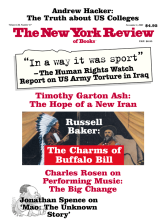Joseph Rotblat, who died on August 31 in London at the age of ninety-six, was a distinguished physicist who, after working on the atomic bomb at Los Alamos, spent much of his life campaigning for nuclear disarmament. Although I never met him, we had several e-mail exchanges—the final one a few days before his death in a London hospital. I was interested in asking him about the reasons he had left Los Alamos at the end of 1944, before work on the bomb was completed.
Rotblat was born in Warsaw in 1908, the son of a prosperous Jewish family. After becoming a physicist in Poland, he was invited to Liverpool to work with James Chadwick, who had won the Nobel Prize for his discovery of the neutron. Rotblat went to Los Alamos early in 1944 as part of the British team headed by Chadwick. He would not give up his Polish citizenship, and Chadwick intervened with General Leslie Groves, who was in charge of the project, to allow Rotblat to come to Los Alamos without being a British citizen. When Rotblat first came to Los Alamos he lived with the Chadwicks and, as he told me, was present at a dinner at their house when General Groves said that the real reason for building the bomb was to keep the Russians in check. While this shocked Rotblat, it was not what finally caused him to leave.
In 1944 there was an American intelligence operation called Alsos, whose purpose was to learn how far the Germans had gotten with the bomb. By late 1944 the members of the Alsos team were able to enter Strasbourg and gather evidence that the Germans had no large-scale bomb project. General Groves presumably communicated this to Chadwick, who in turn informed Rotblat about it. That, he told me, is what made him decide to leave. As far as I know, he was the only scientist to do so. But quitting the project was not easy. The officials in charge of security threatened him with arrest if he told his colleagues why he was leaving. He therefore agreed to say that he wanted to be closer to his family in Europe.
After the war Rotblat worked tirelessly to try to eradicate nuclear weapons. He was one of the signers in 1955 of a manifesto which was issued by Einstein and Bertrand Russell proposing nuclear disarmament. Rotblat was the last living signer of the manifesto. In 1957 the industrialist Cyrus Eaton proposed an international conference on nuclear issues to be held in his hometown of Pugwash, Nova Scotia. During the cold war the so-called Pugwash Conferences provided one of the few occasions on which scientists of all nations, including the Soviet Union, could meet to discuss such matters. Rotblat had a central part in organizing the conferences, and for this he was awarded the Nobel Peace Prize in 1995. He was always known to be a genial, charming, and accessible man. The Pugwash Web site encouraged scientists to communicate with him. I took advantage of this until the week he died.
This Issue
November 3, 2005



